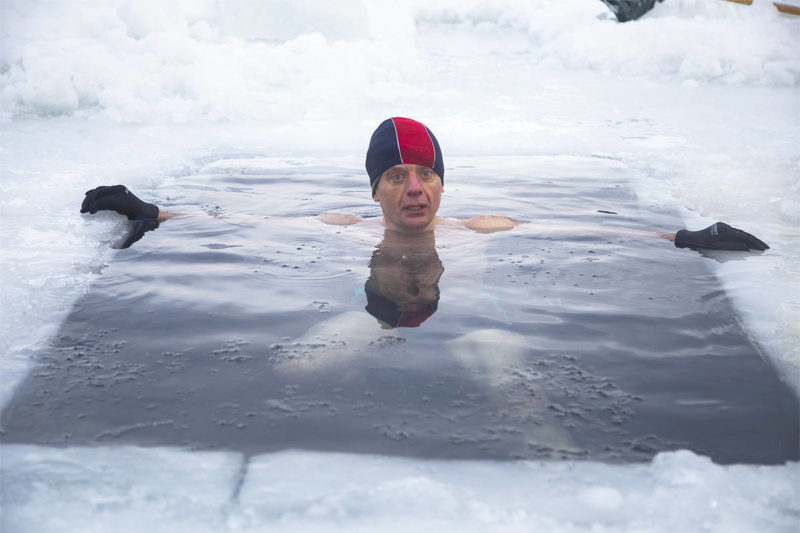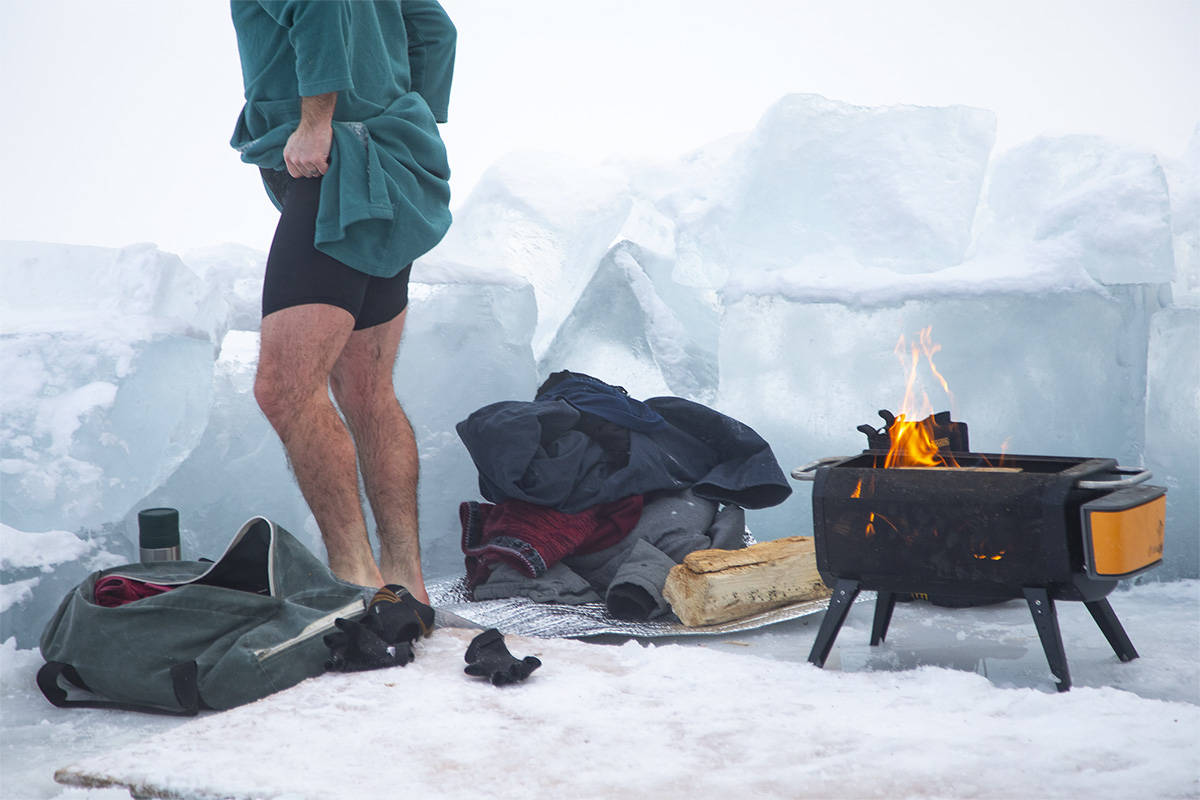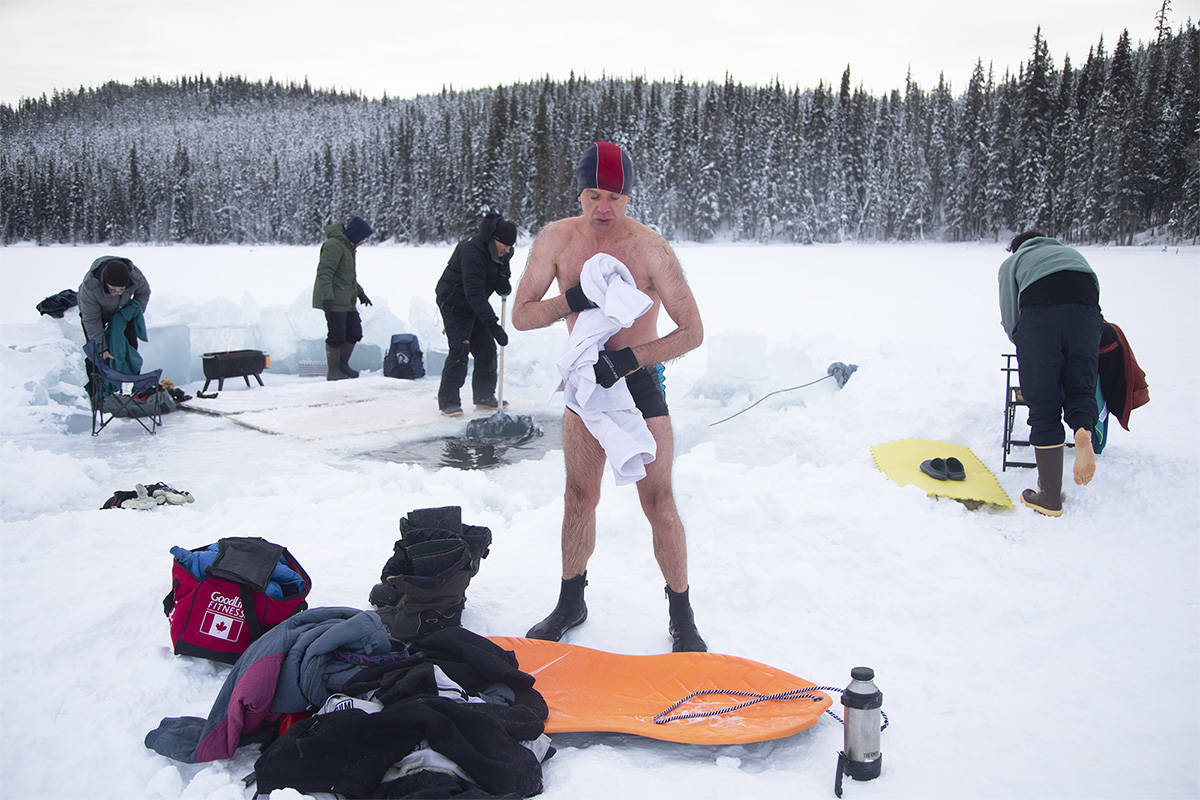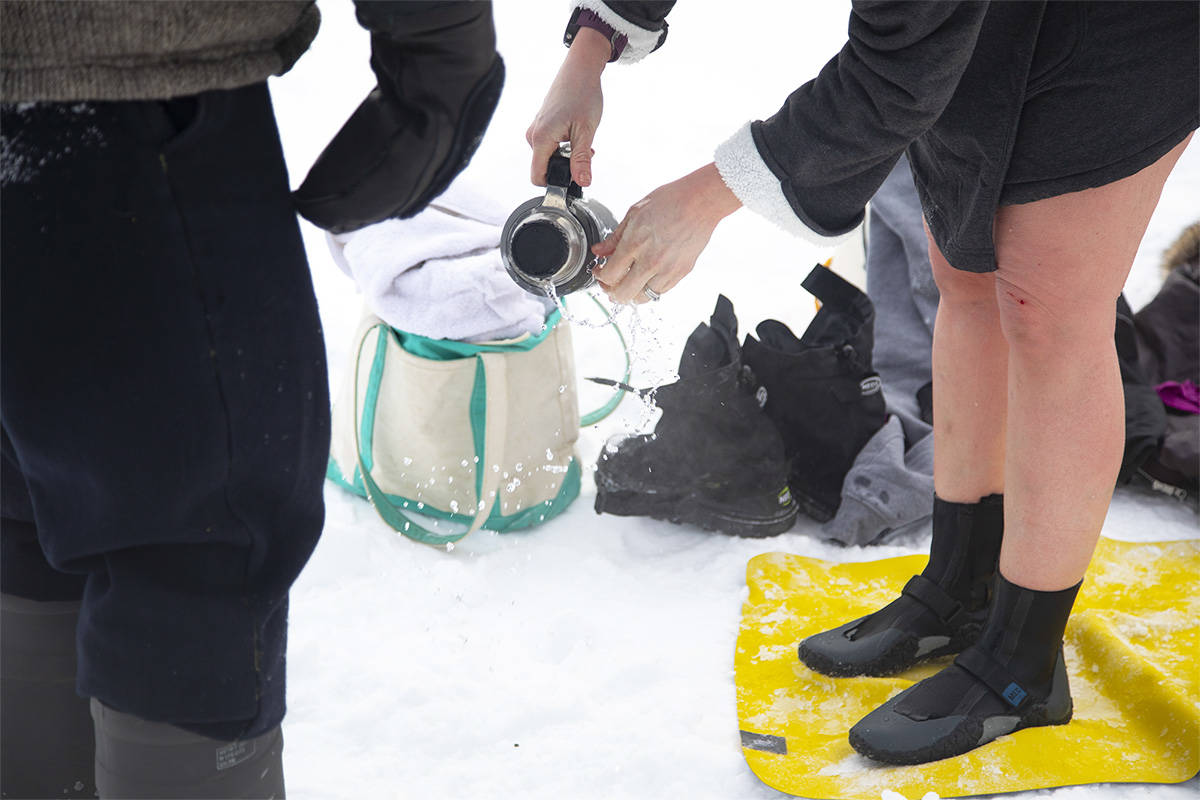A group of Yukoners have gathered weekly this winter at Chadburn Lake in sub-zero temperatures, removed layers of parkas and sweaters, and gone swimming.
For some, the frequent polar dips lend the rush of feeling alive. For others, longer-term benefits of pain relief and improved mental health draw them in. Many have discovered the benefits of all three.
Scott Boone says he was hooked after his first dip on Jan. 1 and now tries to swim weekly.
“First, it was a bucket list item… Then I noticed a lot of my 40-plus years of aches and pains left.”
Boone says a knee injury that had ailed him for six months ceased to be painful after plunging.
“My mood increased, I look at things totally different,” he says. “My kids said to me, ‘You’re not nearly as grumpy as you used to be since you started this ice swimming.’”
READ MORE: 3 Wild Yukon excursions for your dog sled bucket list
The community of Yukon ice swimmers formed serendipitously this year, according to ad hoc organizer James Paterson.
Paterson was a member of a local wild swimming community over the summer. When autumn encroached, and others hung up their trunks for the season, Paterson wasn’t ready to stop swimming.
“It became more of a funny thing that we were continuing to swim, even though ice was starting to build on the lake,” Paterson says.
“I swore I wouldn’t be that crazy guy out in the middle of the lake with a chainsaw, but now that’s exactly what I’ve become.”
READ MORE: Hot spots for hot springs, from the Yukon to California
The activity was addictive, and word-of-mouth grew the ice swimmers’ Facebook group to nearly 100 members in just a few months. Each swimmer shows up for different reasons, Paterson notes.
“I like it because I’m a free diver and I like to go under the water,” Paterson says. “I think the majority of us really enjoy the stress relief.”
Extensive peer-reviewed research exists on ice swimming.
A 2020 scientific review published by medical universities in Canada and Europe noted that cold water swimming for its health benefits dates back to 400 BC.
It cites previous studies that discovered improvements to blood pressure, hormone gland functioning, mood disorders and general well-being. It also noted that ice swimming can lead to fewer upper respiratory tract infections and improve rheumatism, fibromyalgia and asthma.
“There is rising evidence that winter swimmers are more resistant to certain illnesses and infections, experiencing them less frequently and more mildly,” the review continues.
The release of stress hormones from cold exposure can strengthen the immune system, researchers explain.
The article warns that potential cardiac and pulmonary risks can arise for swimmers, depending on water temperature and swimmers’ pre-existing conditions. The most significant risk is hypothermia, though various estimates show most people can survive sub-zero water for 45 minutes.
The Yukon ice swimmers usually don’t dip for longer than 15 minutes, with new swimmers happy to submerge themselves for less than five.
“I find 10 minutes is fine for myself,” Paterson says, noting that seasoned swimmers grow “more uncomfortable” past the 15 minute mark.
“I want to stress that it’s not a competition, everybody is different,” he adds.
Kirk Burke submerged himself for just under two minutes during his first dip on Jan. 30. He was inspired by the Wim Hof Method, which combines meditation and cold water exposure for decreased stress and increased energy.
Burke took up Wim Hof to aid his psoriasis and pandemic anxiety, and found even cold showers were helpful for both. His first dip wasn’t painful, but it was challenging to get his breathing under control.
“All day, and maybe a little bit in the next day, it was kind of a natural high,” Burke says.
Anne Huang was also drawn to ice swimming through the Wim Hof Method. Cold therapy helps the side-effects of her lupus medication, she says.
“It also helps with general aches and joint pains associated with my lupus. It also makes me appreciate how strong, physically and mentally, I really am.”
Kelli Anderson’s first 30-second swim was both “terrifying and terrific.” After more than 10 swims, she can stay in the water for about seven minutes.
“I focus on my breathing and my mind clears … all the worries and stress fade away,” Anderson says.
Paterson recommends that first-time swimmers have warm clothes close and ready.
“The feeling of invincibility lasts for two or three minutes but it’s critical swimmers capitalize on that period of time, though it’s tempting to stand on the ice and say, ‘I feel bullet-proof,’” Paterson says.
Getting dressed quickly alleviates the risk of frostbite, he explains. Many swimmers also dip in neoprene diving boots to keep toes a more comfortable temperature in the water.
New swimmers should always swim with others who can spot them while in the water. The community support of the ice swimmers group provides this, and there are near-daily posts in that group planning the next group swim.
More adventurous swimmers can also join the group of four, including Paterson and Boone, who regularly free dive below the ice surface. Paterson is organizing a free diving course for next September, with a cold-water component, to strengthen their safety procedures and bring more people into the sport.
***
Please note that Provincial Health Protocols currently advise against travelling outside your region to help prevent the spread of COVID-19.
Plan your future adventures throughout the West Coast at westcoasttraveller.com and follow us on Facebook and Instagram @thewestcoasttraveller. And for the top West Coast Travel stories of the week delivered right to your inbox, sign up for our weekly Armchair Traveller newsletter!














 Ice volcanoes erupt along the shores of Okanagan Lake
Ice volcanoes erupt along the shores of Okanagan Lake